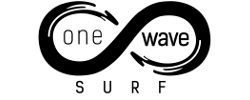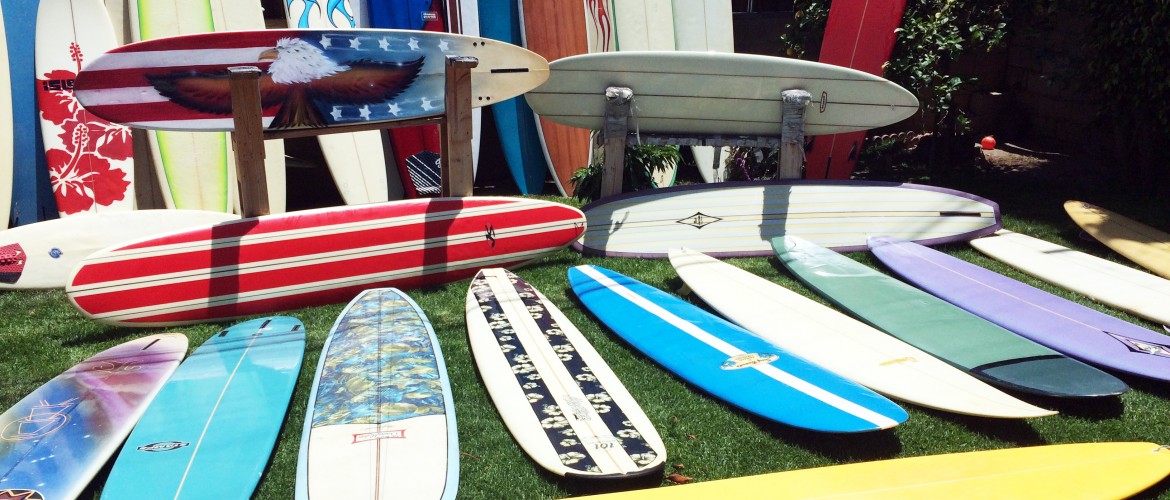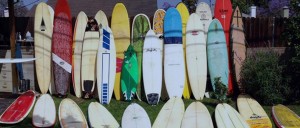Understanding Basic types of surfboard design, shapes and elements
Tyler Trafas
June 1, 2015
Boards
Surfboard designs and Shapes have changed alot over the last ceturty of surfing. However, at the core, there are two basic forms of a surfboard: the Longboard and the Shortboard.
Everything else is a hybrid or a variation of the two. Surfing started with the Longboard and so shall we:
The Longboard- Boards typically ranging from the nine foot mark all the way to twelve feet, synonymous with style and cruising. They usually fall into two categories, noseriders and performance longboards. Noseriders are often large, heavy, full volumed and flat, which help for getting into waves as early as possible and maintaining speed on the smallest of wave. Noseriders usually have a large center fin to provide stability but requiring the surfer to make turns from the tail of the board. A noserider is for cruising, toes to the nose, long drawn out turns,trimming, stylish cut backs and a good bit of fun. Performance longboards have a more pulled-in design and usually a 2+1 or quad fin configuration to allow for a more aggressive riding style. For a competition, a longboard must be at least 9 feet long. The longboard was the original surfboard shape, designed to be more stylish than radical. Easy to paddle, impossible to duck dive, an ode to the past. More board volume allows for faster movement through the water making it easier to catch waves. Not ideal for steep waves, but often the best choice for beginners. Surfers who choose to longboard are usually choosing to pick a more laid back style of surfing.
The Shortboard- Modernized in the 1970’s by shapers such as McTavish and Simon Anderson. The classic short board generally runs between 5’6 and 6’6 with a thruster fin set up, aggressive rocker, squash tail and pointed nose Variations are numerous, but the general style is designed for a more aggressive ride. Sharper turns, steeper drops, trick riding and big aerials. The smaller overall volume of these boards allows the rider to duck dive under waves but also requires much more paddle strength to catch them. The sacrifice of volume also affects the speed and the rider will at times have to pump to create their own speed down the wave. Built for the more experienced surfer. Probably the most common mistake new riders make is moving down to a short board before they are ready.
The Funboard – A midsize board generally between seven and eight feet. These boards are a hybrid of the long and short board. Often employing a thruster or quad set up.
The Mini-mal – A small longboard, usually between seven & eight feet in length but retaining much of the proportions and template of a longboard, while being slightly smaller. No nose riding or radical maneuvers but can help people along their way to switch to smaller boards. They cruise nicely and can handle in almost any conditions.
The Fish – Fish have the overall shape of a shortboard with a larger volume and the iconic swallow tail which looks like an inverted V. They usually come as a twin fin, or quad fin set up, although you will find hybrid tri fin set ups as well. The fish was designed for competent shortboarders to ride smaller boards on small days as opposed to pulling out the longboard or MiniMal. Often new riders make the mistake of getting a fish as their first board. I find this to be a mistake 90% of the time. While floatier and wider than a normal shortboard, the fish is in essence a shortboard, thus difficult to learn on.
The Gun- Also known as a rhino chaser. Can be anywhere from a 6’8 to 10’. These boards are built for balls to the walls surfing of giant waves. They are slim, narrow, either tri or quad fin set ups. Rocker is adjusted to the type of big waves they will be surfing. They are longer so that the surfer can match the speed of the bigger waves. Maneuverability is lacking with the gun, but that is not what they are built for, which is getting into huge waves and gnarly surfing.
Fin Setups
The thing to think about when it comes to tails and fins, is how water moves around them and through them. Think about hydrodynamics and how water will be moving past an object.
Single Fin: The first ever style fin setup was the Single Fin. Although the outline of the fin varies quite a lot, the concept is to make your board ride like it has a single keel, or skeg, and rides more stable but also must stay as close as possible to the pocket. It is hard to make up your own speed on a single fin, which is why turns must be drawn out and precise.
2 + 1: A long center fin with two small side fins, a performance setup for modern longboards. The two side fins called ‘sidebites” are leading the bigger center fin into a turn, allowing your board a tighter turning radius. This setup sacrifice some of the stability of a single fin for increased maneuverability. The closer fins are in size, the more the board handles like a thruster.
Thruster: Introduced to the world at the famous Bells Beach contest in 1981 by Simon Anderson and has been the most popular fin set up ever since. Three fins of equal size help keep you more stable than a twin. Having a fin underneath your back foot allows you to pivot easily and make sharper more vertical turns.
Quad: Four fins of equal or varying size with a split trailer fin. The rider must have more rail in the water to make turns thus making turning much more difficult. Quads are much faster off the pump and more stable in a heavy barrel section, so says Kelly Slater.
Twin: Very popular in the 60’s and 70’s. Twin fins give you a looseness to your board but allow you to make sharper turns than a single fin. Usually they are for fish only and accompany a swallow tail. The fins ride sluggish on the flats and ride rail to rail on turns
Bonzer: A design from the early 1970s and perhaps a bit before its time. The purpose of the Bonzer system is for the flow of water to move quickly and efficiently, in an organized way from the tail in a synergistic fashion. Either set up as a 3 fin or 5 fin system, the bonzers help your board accelerate in the flats and hide hard in rail to rail turns.
Tails
The tail is where the rail meets the back of the board and the surfboard ends. However, the shape of the tail does play a role in how the board rides as it is where the surfboard first engages with the wave.
Square: Looks exactly like it sounds. The rails come to the tail and simple end in a square, as if the shaper sawed off the tail at that exact point. The square tail is wider and helps with stability, thus it is seen on many noseriding longboards.
Squash: The most common tail shape for modern surfboards. It’s more tapered than square tail until the point that the rails come to an abrupt end. Allows for more vertical turns, sharper and radical maneuvers. It is a compromise in design that offers a stability while allowing the rider to release your tail with minimal effort and the ride to remain loose. Thus, the squashtail has become a standard for surfers to go to in both small and overhead waves.
Rounded tail: The tail comes to a nice oval end. This puts more rail in the water. It is a common design tail for a point break riders, where turns are more drawn out and you want more board in the water. Not as easy to release the tail as a squash.
Pin: Same as a rounded pin, but more pinched in. The tail really digs into the wave like an extra fin. It is ideal for waves with good for barrels or a lot of size and power.
Diamond: A hybrid tail between a squash and a pin. Allows the surfer to ride a shorter board. Resembles the bottom half of a diamond.
Swallow: A very popular design in the 1990’s and early 2000’s. The swallow tail is a hybrid between the square tail and the pin. It uses the rail drive of the squaretail with the sensitive pintail. This is the tail shape used on most fish surfboard. The wider tail gets, the more paddling power and increased drive in smaller waves the surfer has.
Bat wing: Usually always accompanying a quad fin set-up, built for speed. Are suppose to help with the quad fins to give more maneuverability and control while maintaining high speeds.
Asymmetrical: The tail is not unique in its template but rather provides one type of tail for frontside riding and another for backside. An asymmetrical tail looks like the shaper sawed half of one tail and glued it to the other. For example, a shaper may design a board to be a swallow while the surfer is going frontside and a squash when riding backside. This can help the rider in specific maneuvers going frontside to backside.
Rails
Rails play a major factor in how your board floats and turns versus how hard it grabs into the water. The two main categories of rails are Soft and Hard rails. The Soft rail category generally has no sharp or hard edges, meaning the shape is primarily elliptical, round and smooth from the top of the deck to the bottom of the board. Hard rails come to an edge at some point in the rail design.
The more smooth and rounded your rail the floatier the edges and the more drawn out a turn is. Hard rails generally make for abrupt, well timed maneuvers as the grab into the wave more.
Full rails: Not matter the shape of the rail, rails with extra foam or less taper than normal, give the board more volume on the rail. This makes you float more and allows you to cut down in length and width. This also forces the board into more drawn out turns. Good for mini-mals, longboards, and shortboards for heavier guys. Most beginner surfers will be better off with a midsize or full rail until they are more developed in surf style.
Pinched rails: Tighter, pinched out. Usually made for more hollow waves, faster waves. Pinched rails are common on gun type surfboards.
50/50: A hybrid rail where the hard edge of the rail is exactly at its midpoint. other proportions like 60/40 describe the hard edge at different points of the rail. Downturned rails are when the edge of the rail is at the bottom of the board.
Deck and Under-Deck Specialties
Rocker: The arc of the board from tail to nose. The more rocker you have, the less board is engaged on the surface of the ocean. The inverse is also true, meaning that low, or even flat rocker, puts more of your board on the surface of the water. Generally speaking, cruisy single fin longboards have no or little rocker allowing the rider to paddle quickly and get into a wave early, but not a steep wave. The more rocker you add the slower the board paddles but the steeper the wave the rider can access.
Front (Nose) Rocker: The curve coming up from the middle and bottom of the board. Notice if you lay your board flat on a table, or the ground. The nose points up, or lifts up a little, or a lot. This difference is what makes your board ideal for certain waves. A heavy rocker the nose will look more like a banana and will be noticeably angled up, the lower or lighter the rocker, that flatter the nose will rest against the ground or table. Too much rocker your board can “push water”, which means the board will not effectively let you paddle. Too little of rocker makes dropping in on very steep waves more difficult.
Tail Rocker: From the middle of the board to your tail this is the curve coming out at the tail. Tail rocker and your front rocker work together to give your board a specific feel. Usually has to do with what style of wave you will be surfing and what you want to be doing on those waves. Rarely would a shaper design a board with high rocker in the front and no rocker in the back, but it is possible.
Concave: The shape of the bottom of a surfboard is designed with a concave. A flat concave means the underside of the board is totally flat from rail to rail. As a shaper adds concave, areas of the underdeck are scooped out. Most boards have some kind of concave.There can be single and double concave. If you hold the board fins up, and look closely at the bottom of the board, you can see that from rail to rail the bottom is not flat. If there is one area scooped out it is a single concave, two areas would be a double concave. Concave affects how water flows from the nose of the board to the tail.
Channels: Channels help with speed. Where a concave is a subtle scooped out section on the underside of a surfboard, channels are deeply cut indentations. They also go from nose to tail on a board helps rapidly funnel water. Usually channels are shaped around the fins and tail of a board, helping water flow from one part of the board to the other or quickly away from the fins.. Although the concept of a channel makes a lot of sense they are hard to shape and machines don’t do a great job of placing them accurately. As such, Channels have never fully caught on, every now and then you see boards with them, but channels are still not considered a staple in surfboard design.
—
Of course those old dudes could talk boards forever and I hold nowhere near the knowledge of the legends, so I hope this suffices as a solid into to surfboard basics.


